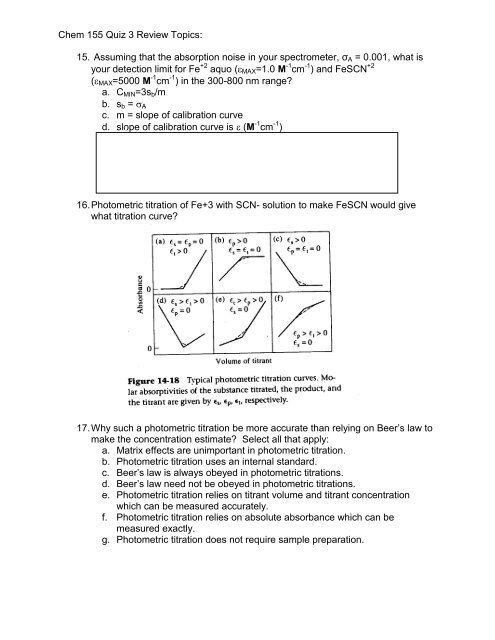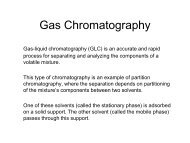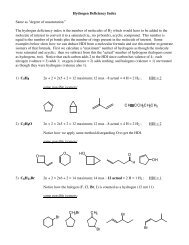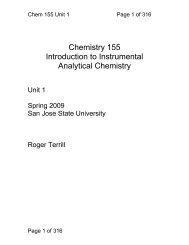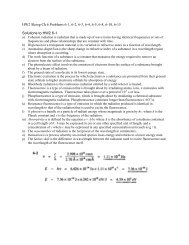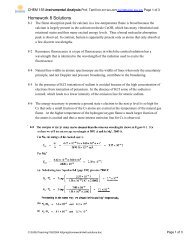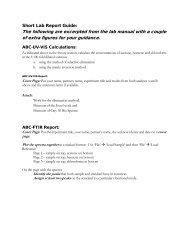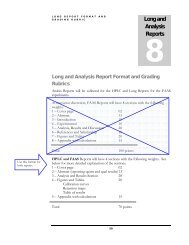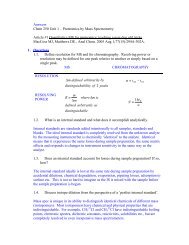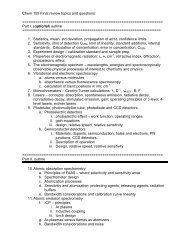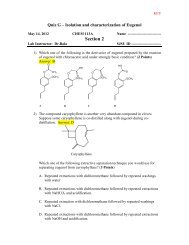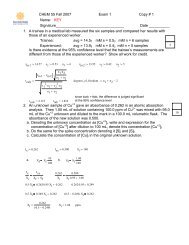Chem 155 Quiz 3 Review Topics
Chem 155 Quiz 3 Review Topics
Chem 155 Quiz 3 Review Topics
You also want an ePaper? Increase the reach of your titles
YUMPU automatically turns print PDFs into web optimized ePapers that Google loves.
<strong>Chem</strong> <strong>155</strong> <strong>Quiz</strong> 3 <strong>Review</strong> <strong>Topics</strong>:15. Assuming that the absorption noise in your spectrometer, σ A = 0.001, what isyour detection limit for Fe +2 aquo ( MAX =1.0 M -1 cm -1 ) and FeSCN +2( MAX =5000 M -1 cm -1 ) in the 300-800 nm range?a. C MIN =3s b /mb. s b = Ac. m = slope of calibration curved. slope of calibration curve is (M -1 cm -1 )C M3s bm30.0011M 1 cm 1 3 10 3 cmM30.0015000M 1 cm 1 6 10 7 cmM16. Photometric titration of Fe+3 with SCN- solution to make FeSCN would givewhat titration curve?17. Why such a photometric titration be more accurate than relying on Beer’s law tomake the concentration estimate? Select all that apply:a. Matrix effects are unimportant in photometric titration.b. Photometric titration uses an internal standard.c. Beer’s law is always obeyed in photometric titrations.d. Beer’s law need not be obeyed in photometric titrations.e. Photometric titration relies on titrant volume and titrant concentrationwhich can be measured accurately.f. Photometric titration relies on absolute absorbance which can bemeasured exactly.g. Photometric titration does not require sample preparation.


